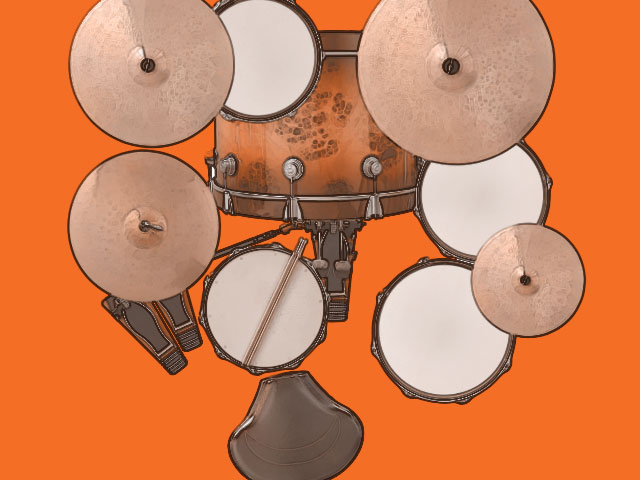- Published Sep 11, 2013 in In The Studio
EQ tips for toms and cymbals. Part 6 in a series on the basics of EQ by Justin Matley.
By saying "the rest of the kit", I am referring to tom drums and cymbals. As a personal style, I'm a clean and straight forward kinda guy. Rarely has this helped in getting dates (when I was going on them), but it very much helps when considering where your kit is going to sit in the overall sonic environment.
For starters, try and pick your mics well. Consistency is key: identical mics for each of the toms if close micing, and matched pairs overhead. For the toms themselves, stick to high-impact ready dynamic mics. Many companies make custom designed mics specifically for mounting on toms (or for the close corners they reside in), such as Shure with their Beta 56A and Sennheiser with the E6043. I've tried small diaphragm condensers and ribbon mics used on toms before too, But I tend to always be happiest sticking to dynamics. Again, keep those suckers tuned and use relatively new heads. Brand new ones tend to stretch out, so giving them a little playtime a week before isn't a bad idea.
On the overheads, I like to experiment. I generally prefer a pair of small diaphragm condensers two or three feet above the toms in an X-Y pattern. However, this is purely subjective as nearly any condenser or ribbon mic array can be used. This is part of the fun, and using the room to your advantage is key. If the room is reasonable sounding, stick mics all over the place in mono or stereo arrangements and capture those reflections.
For specific EQs on toms, I'm going to cite Ben Veso's blog for a few places to start:
Start here for a slick, modern tom sound
- Band 1: +6 dB at 150 Hz
- Band 2: -15 dB at 800
- Band 3: +9 dB at 6 KHz
Start here for a heavy metal tom sound
- Band 1: +4 dB at 150 Hz
- Band 2: -15 dB at 600 Hz
- Band 3: +8 dB at 3.5 KHz
- Band 4: +2 dB at 10 KHz (high shelf)
Start here for a vintage 70's tom sound
- Band 1: high pass at 90 Hz
- Band 2: +4 dB at 220
- Band 3: +4 dB at 4.5 KHz
- Band 4: +6 dB at 7 KHz
That should give you a jumping off point. Again, hyper-EQ doesn't substitute a well captured recording.
For the overheads I like to gradually roll off the bottom starting at around 50-75 Hz (no more than -6 dB generally as I get down to 20 Hz. I also like to lift the high-mids to highs with a wide Q about 2-3 dB, say 2 or 3 KHz to close to 10 Khz. Finally, I'll roll off the very top end from there with a low pass filter for -4-5 dB. I like to keep the crispness of the cymbals without penetrating the listener and overwhelming any natural warmth the drums provide. Any natural room sound you can carefully balance into the mix to supplant this will often help.
In the end, your ear and the type of music are going to determine the final balance you strike between what you capture and how you manipulate it. If I've said it once, I've said it a thousand times: Get Great Sounds!
Good luck and happy recording!

